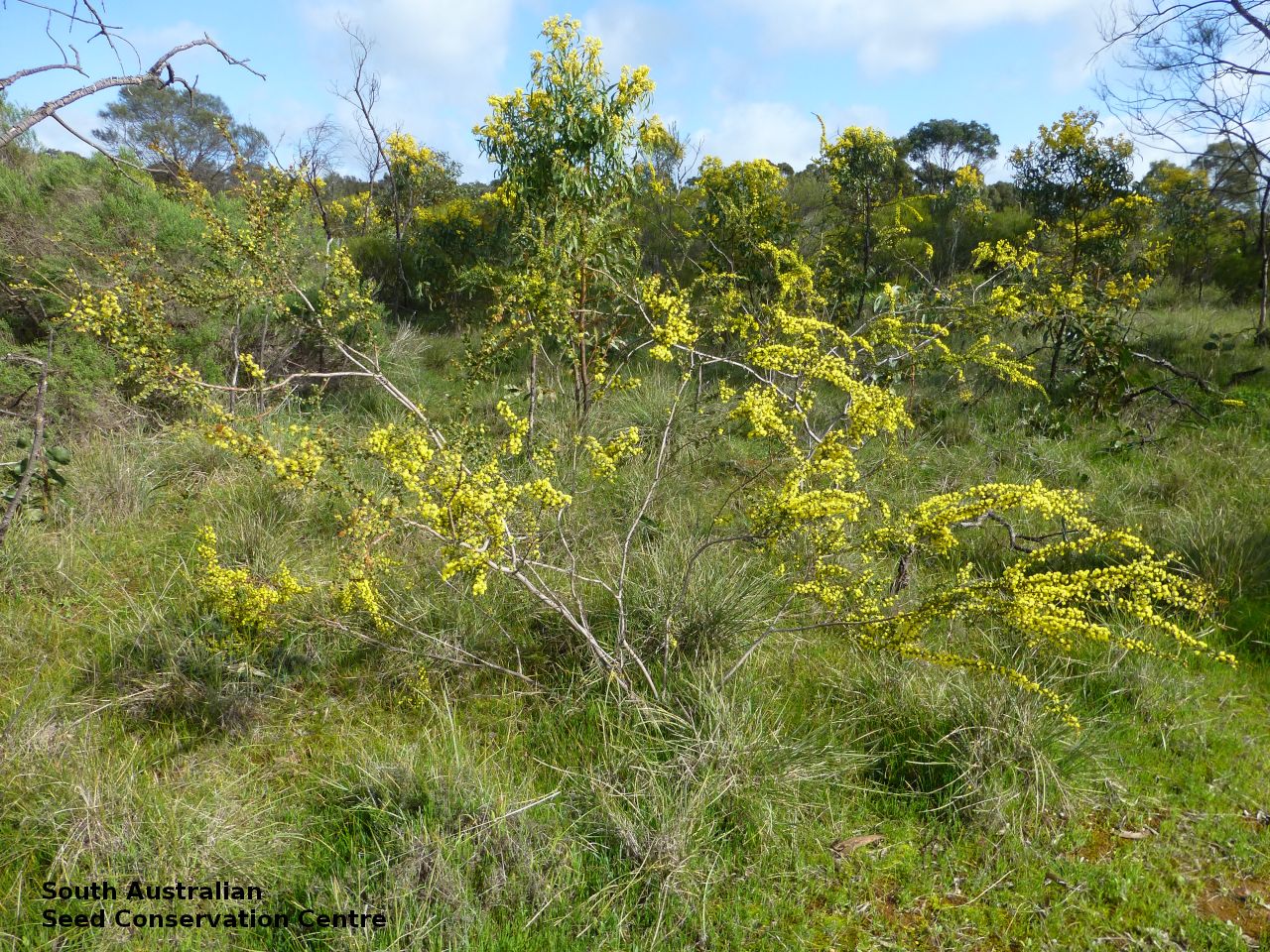
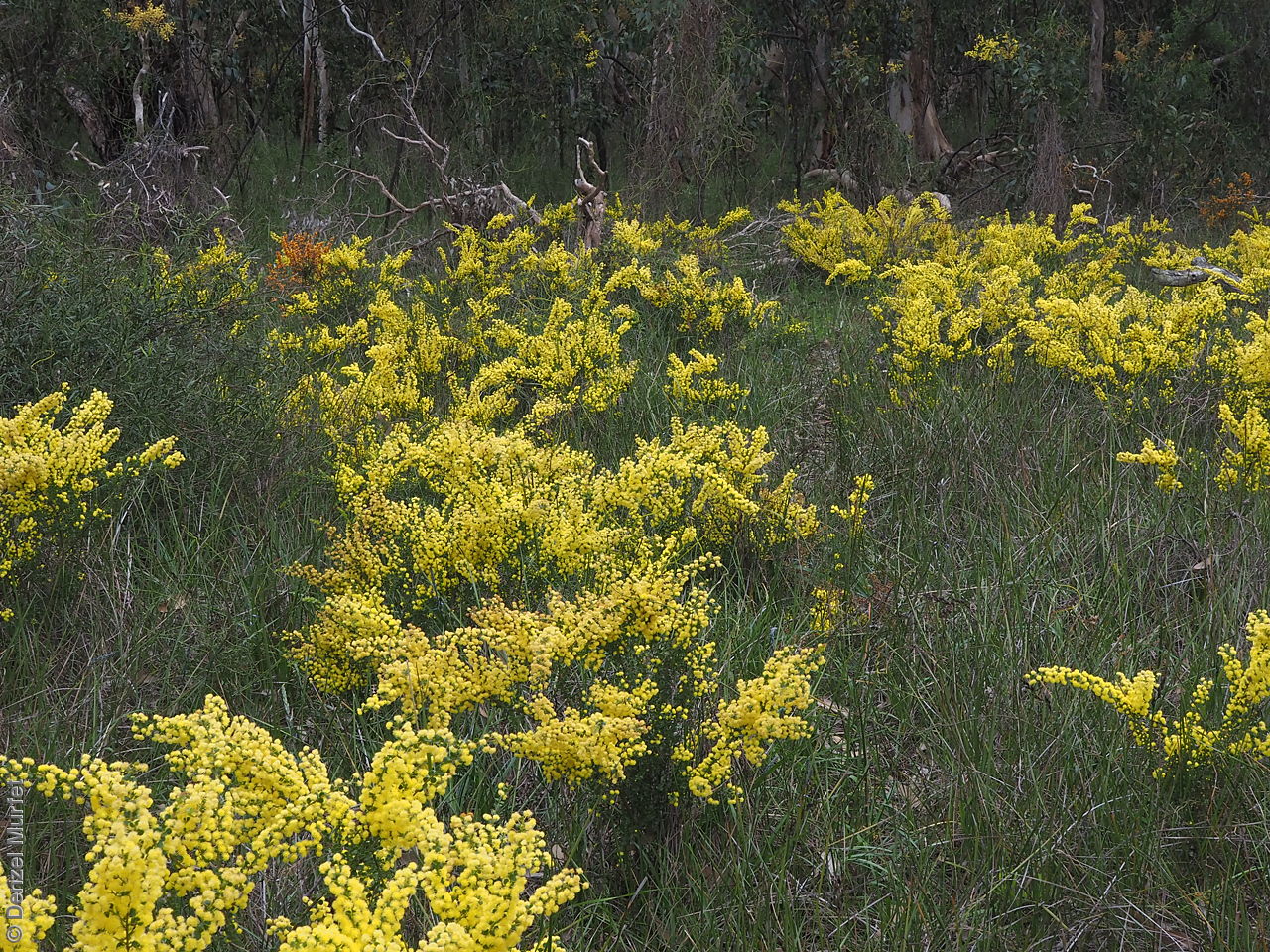
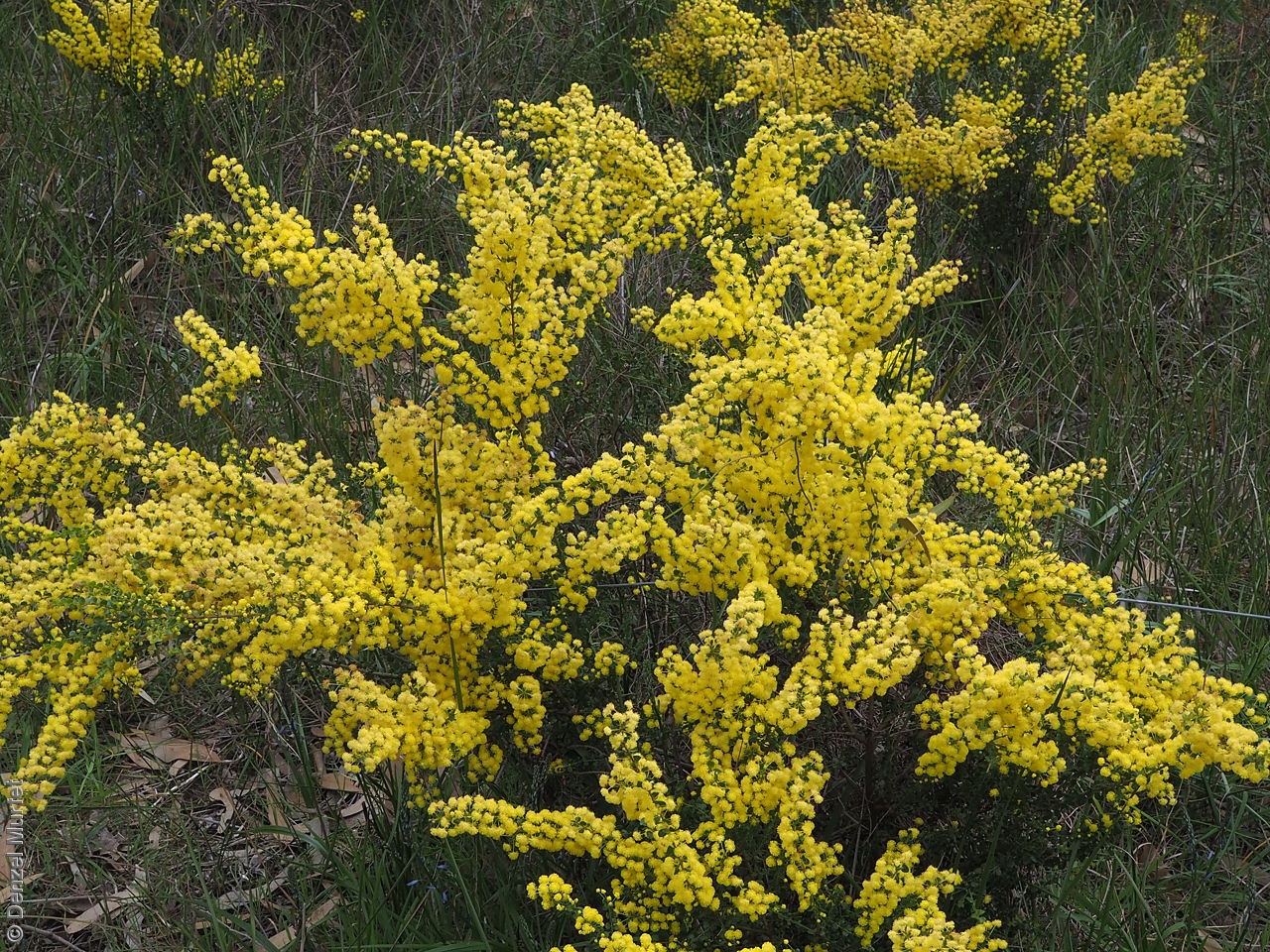
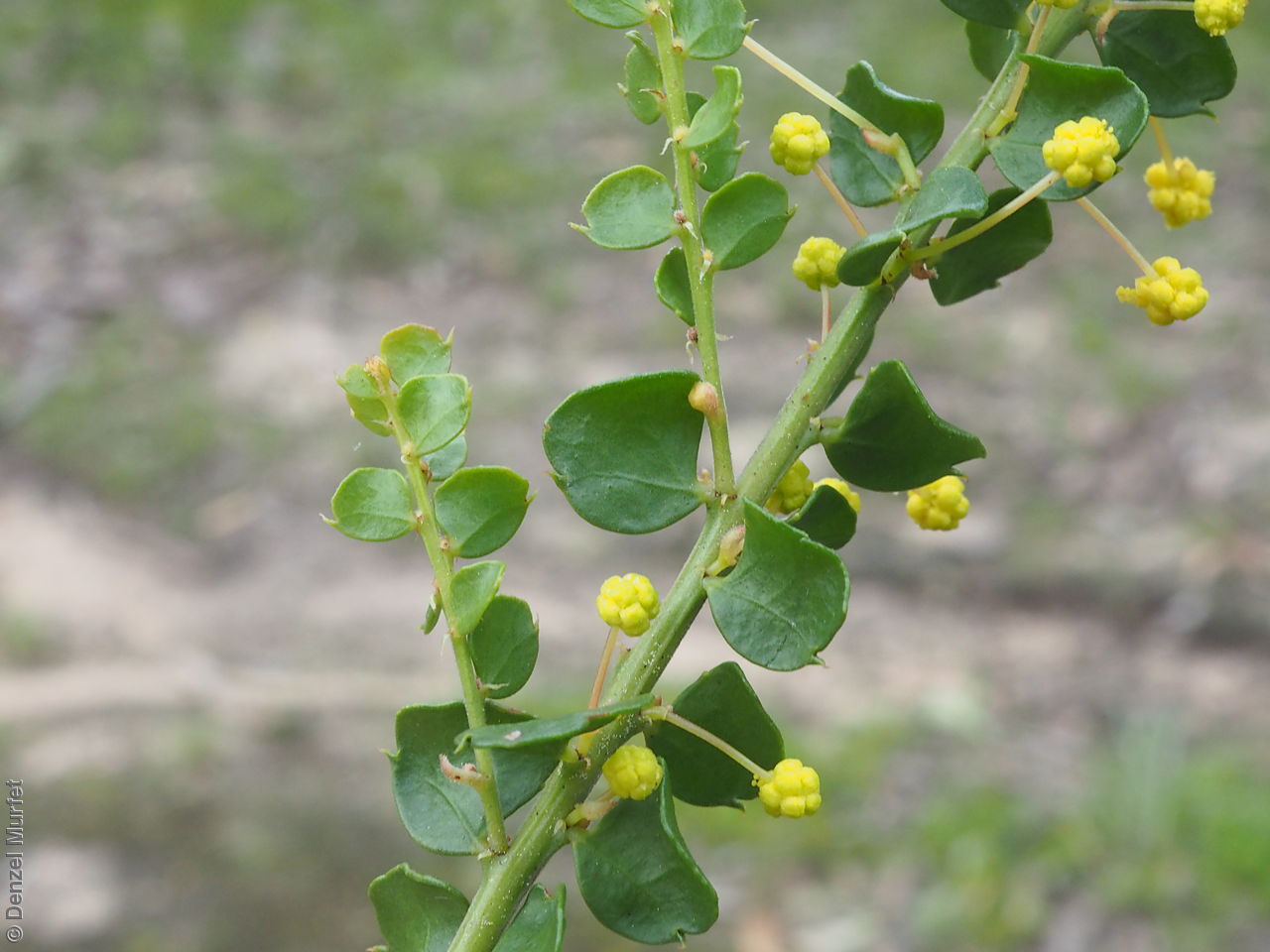
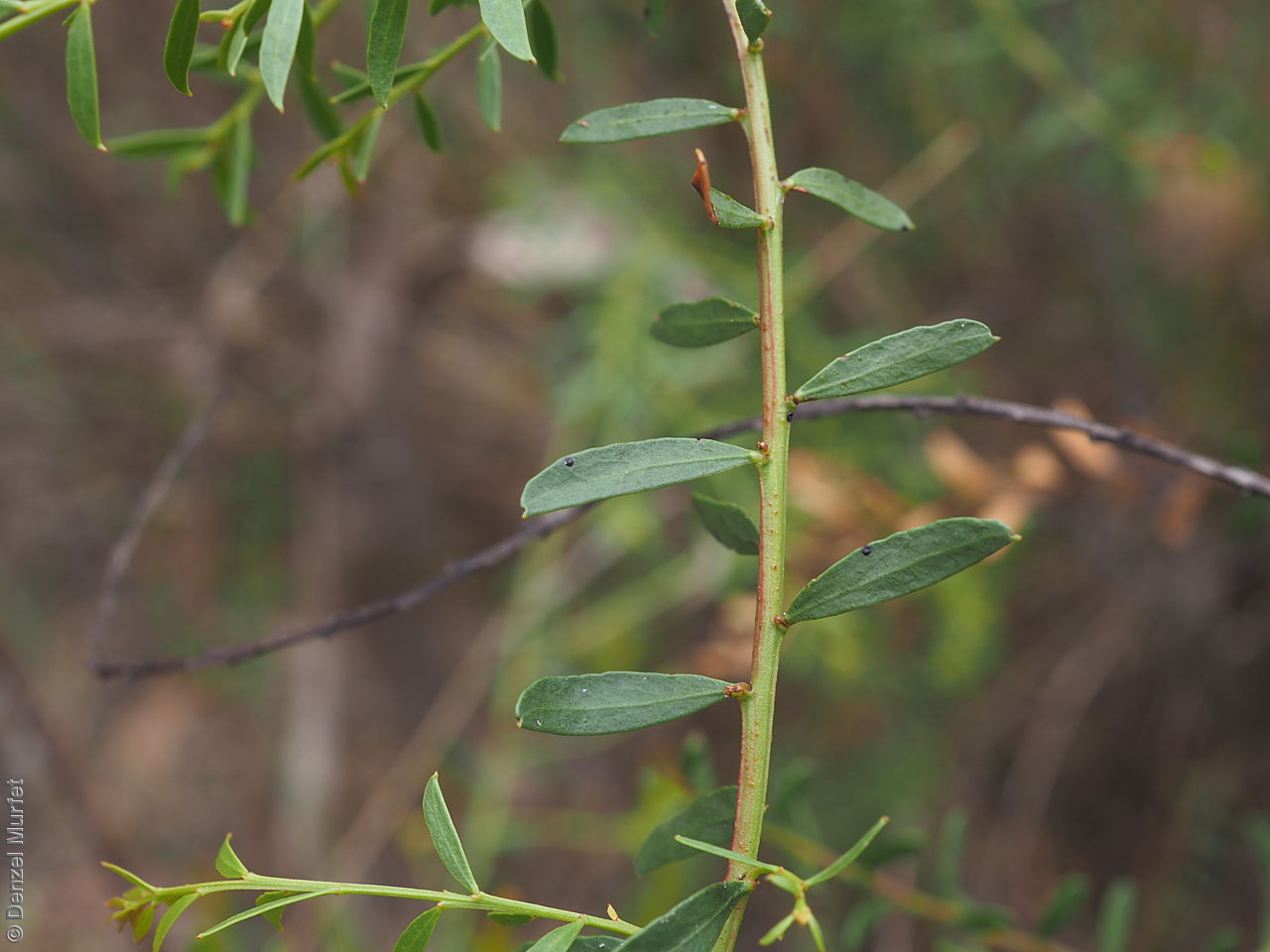
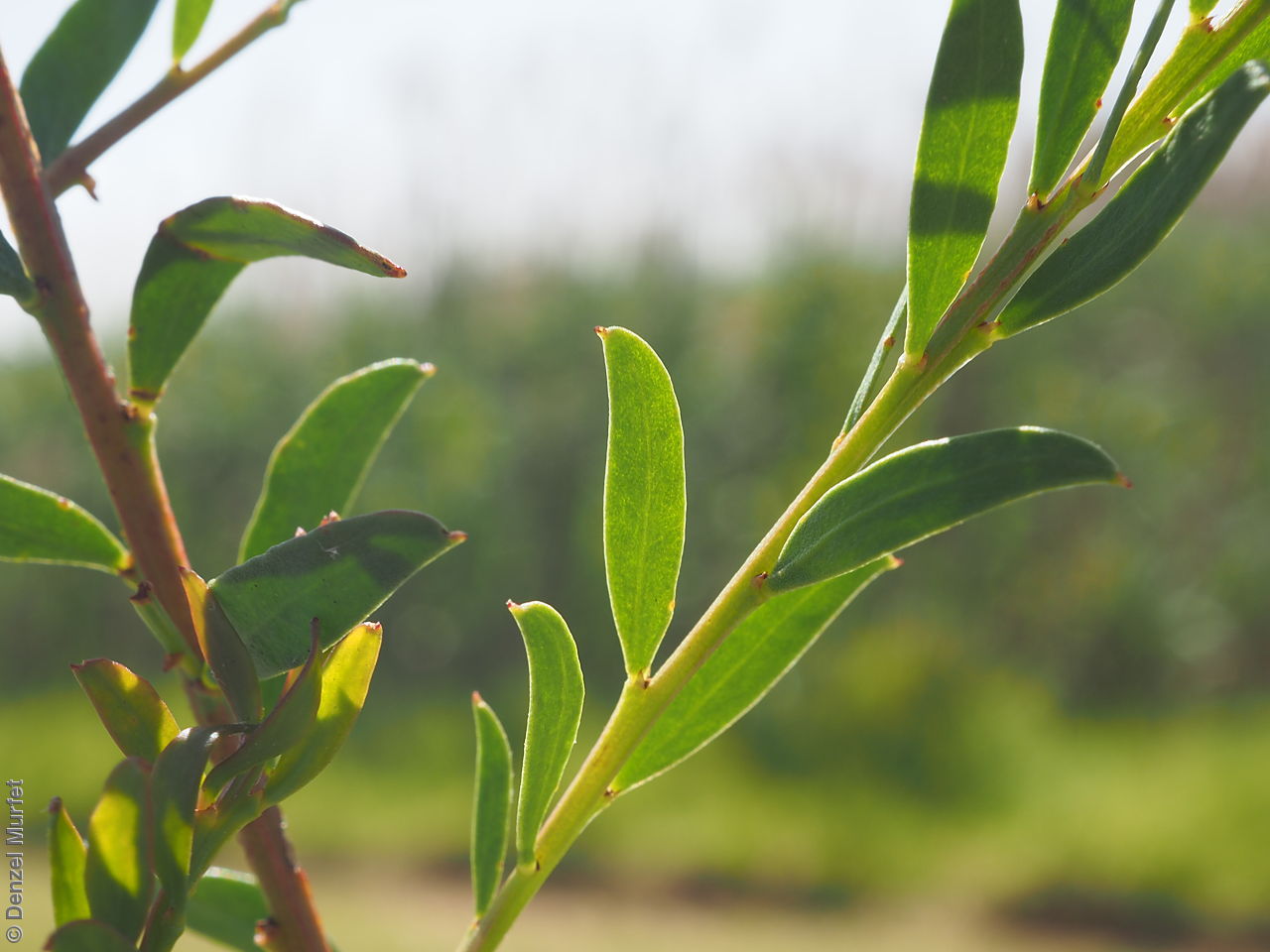
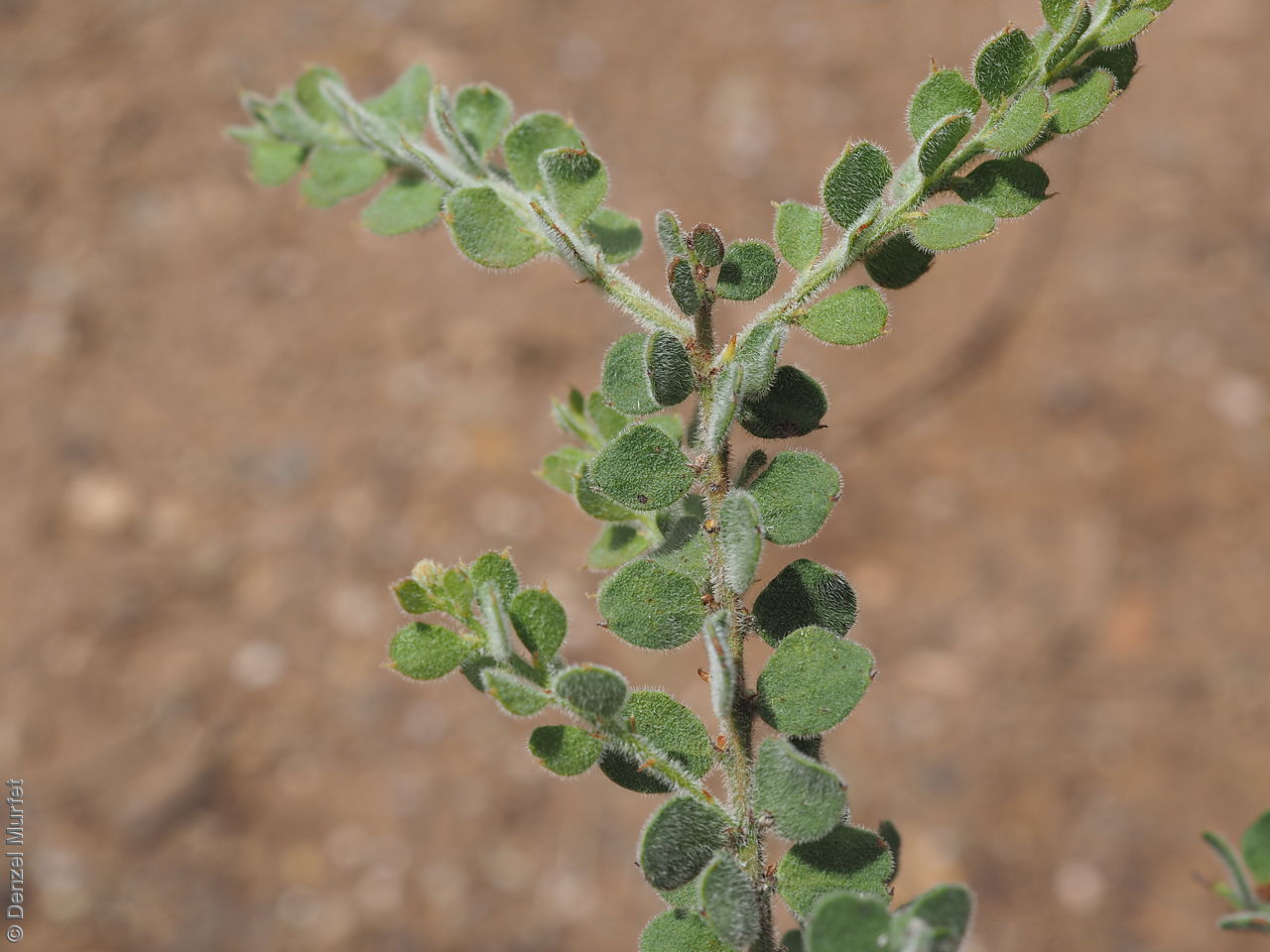
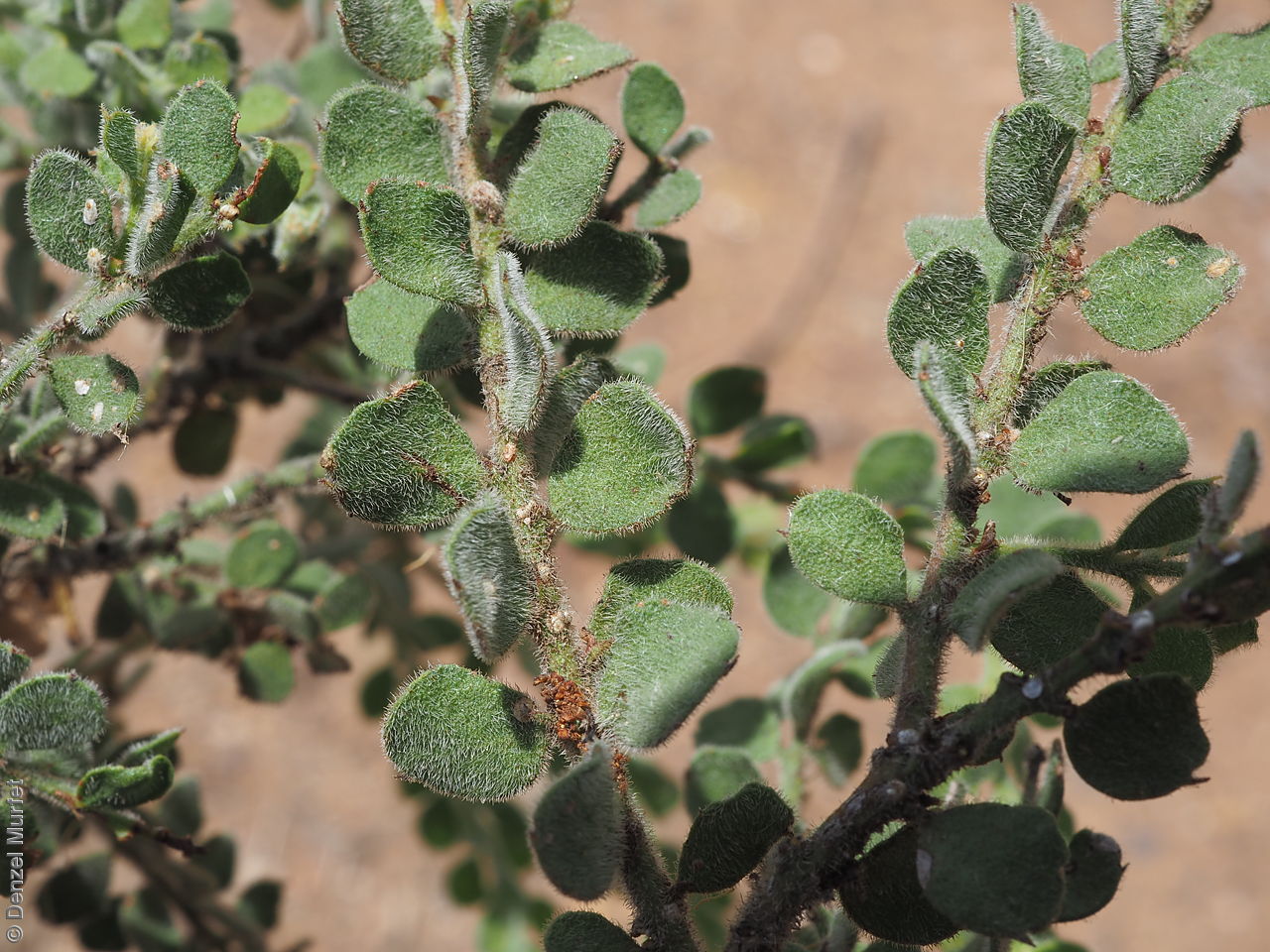
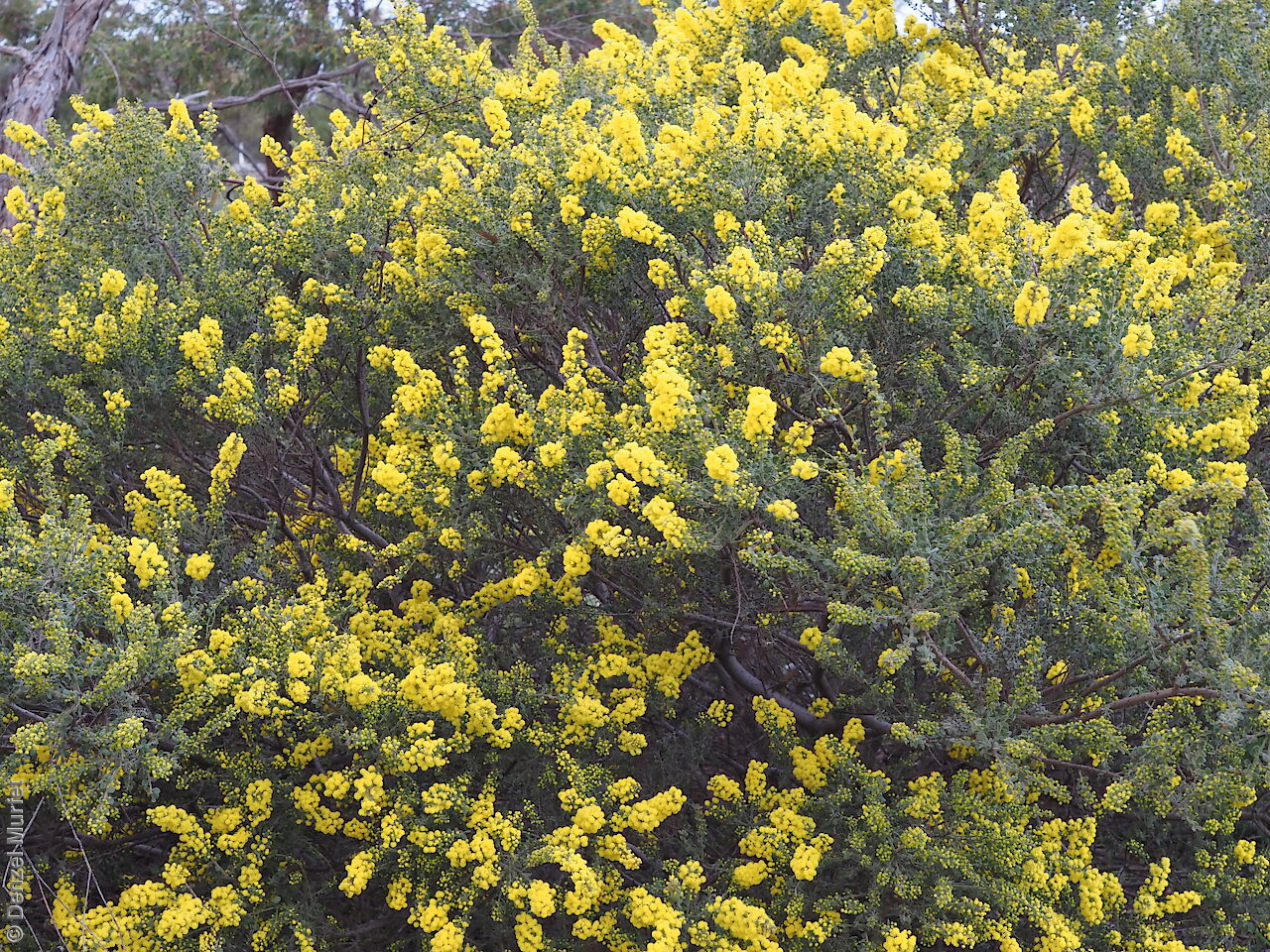
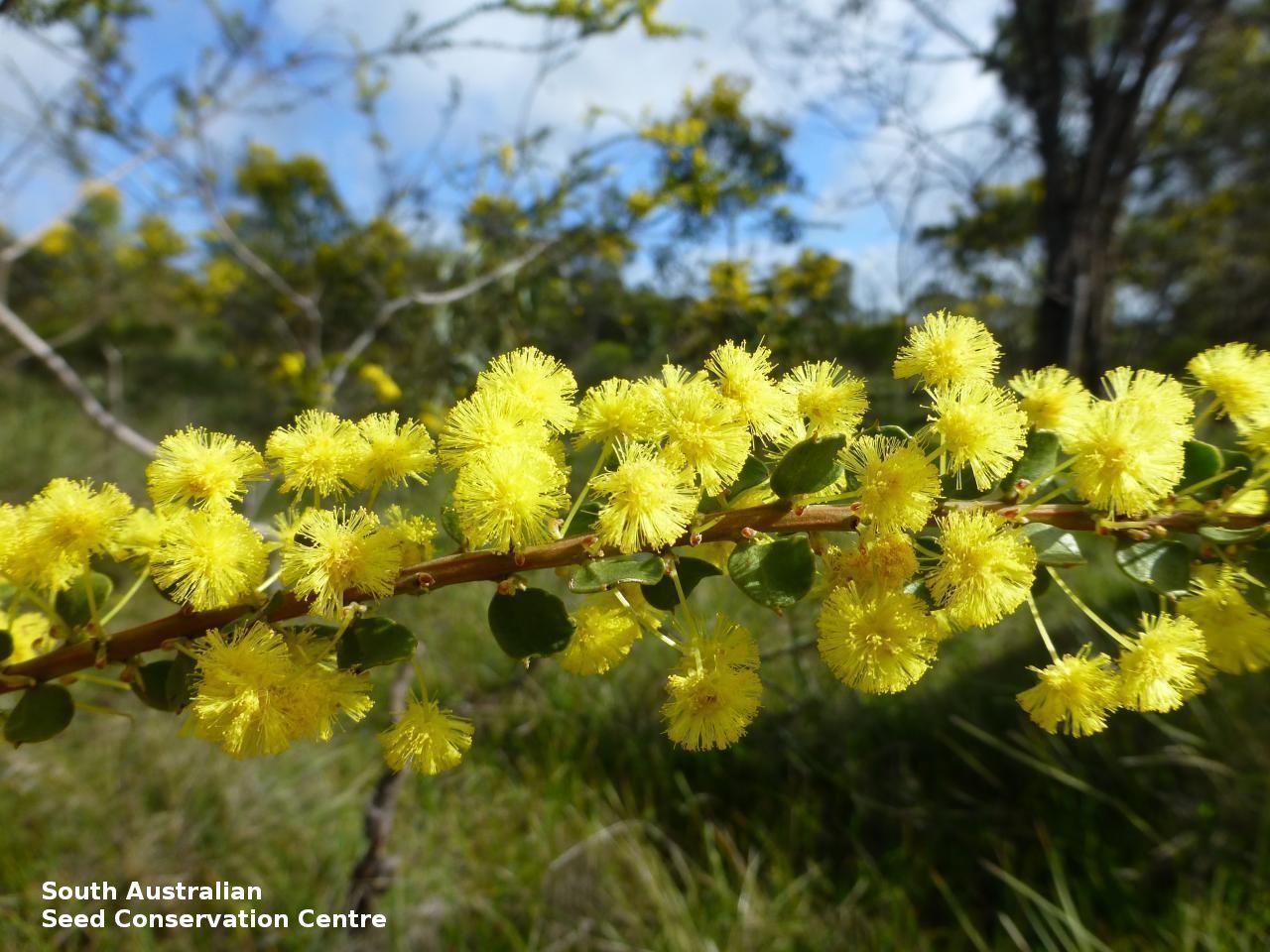
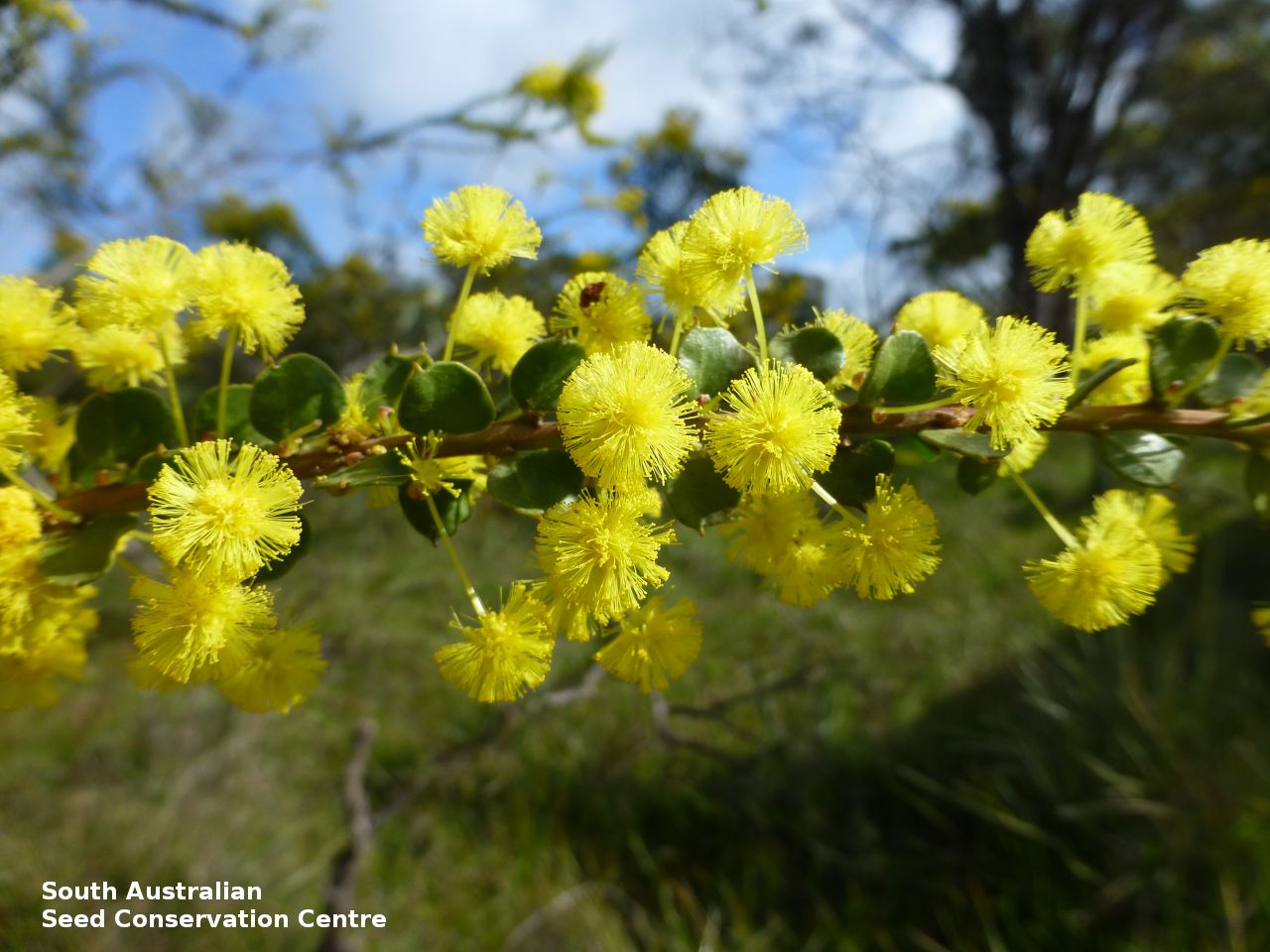
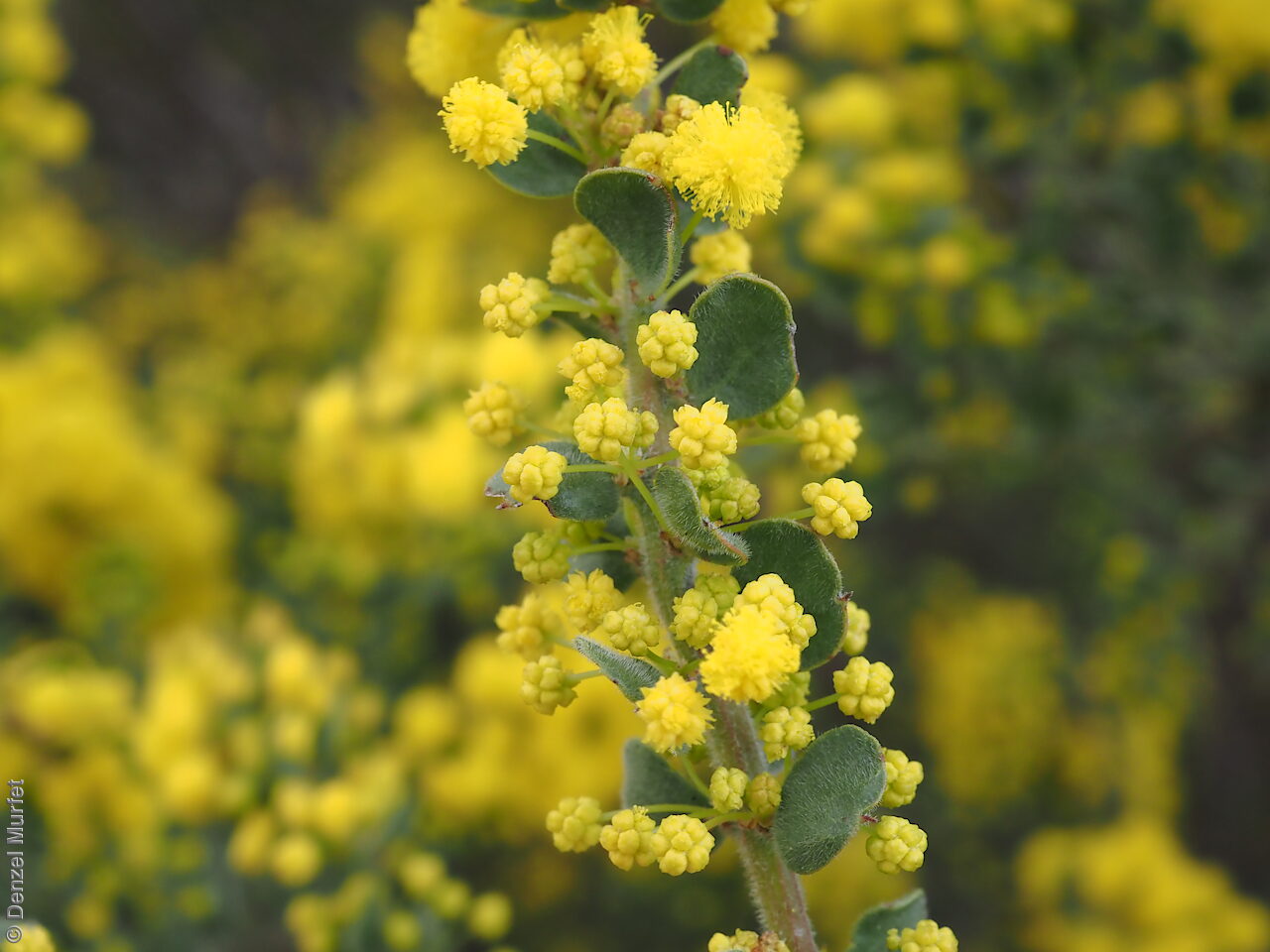
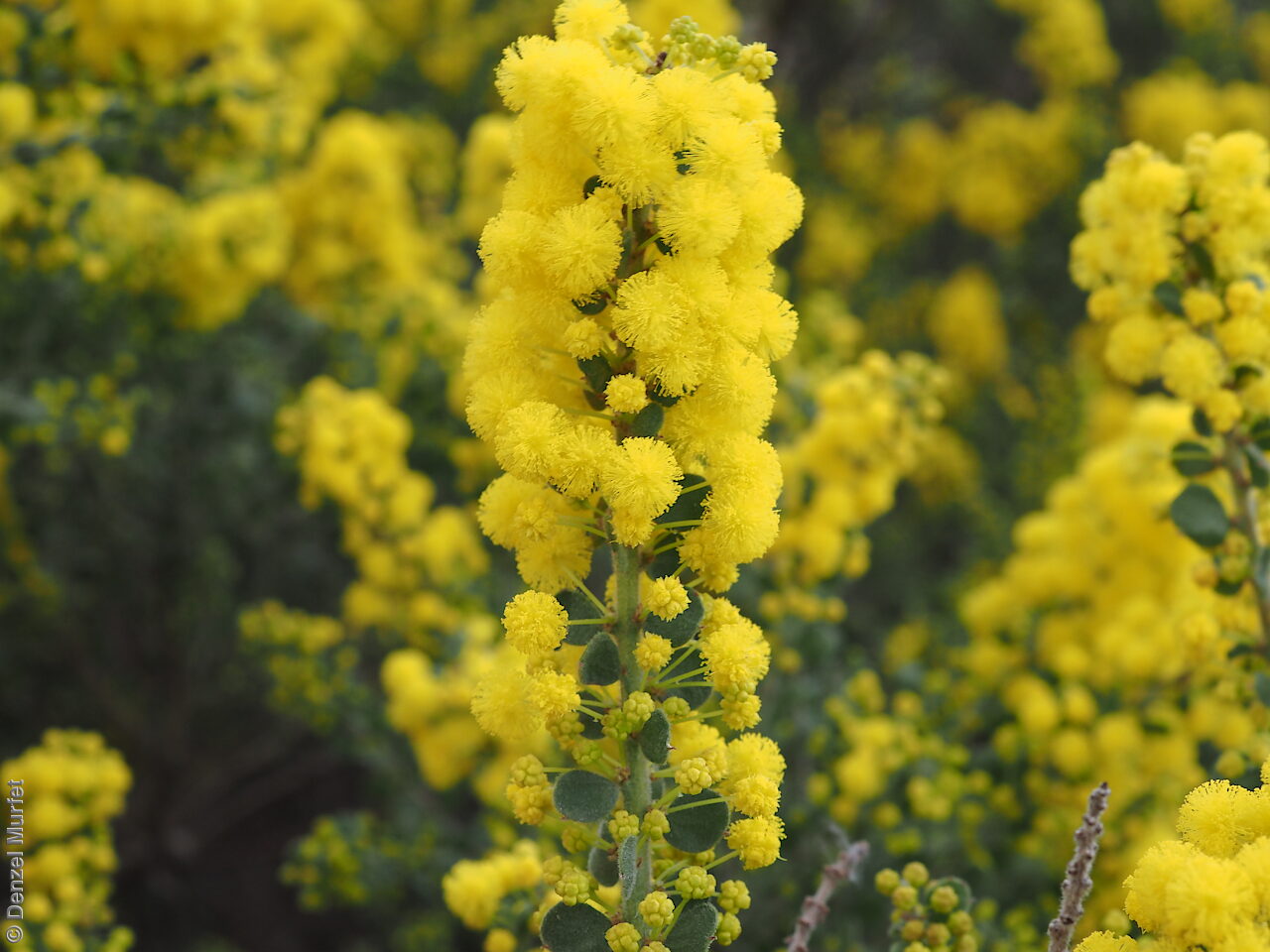
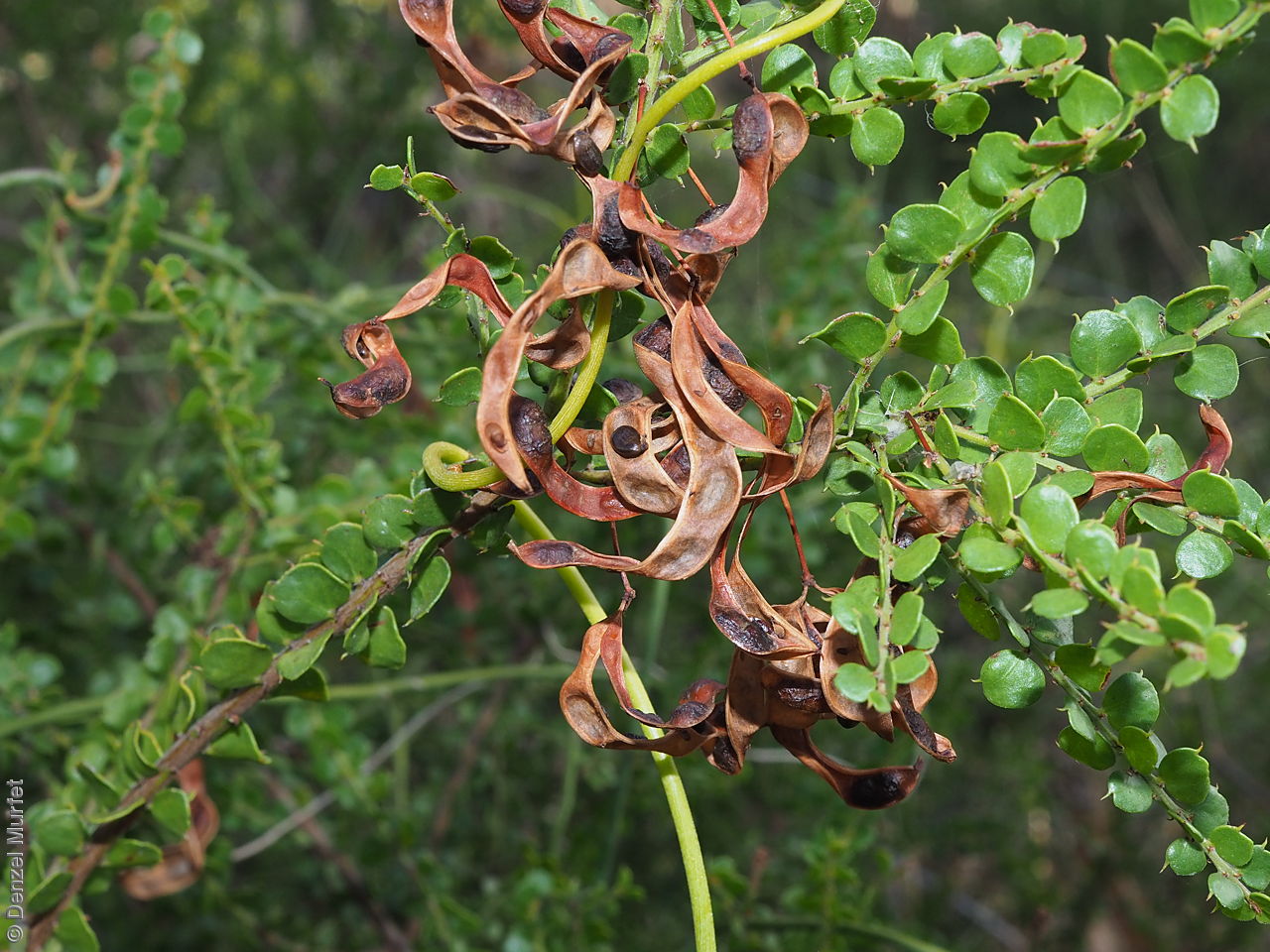
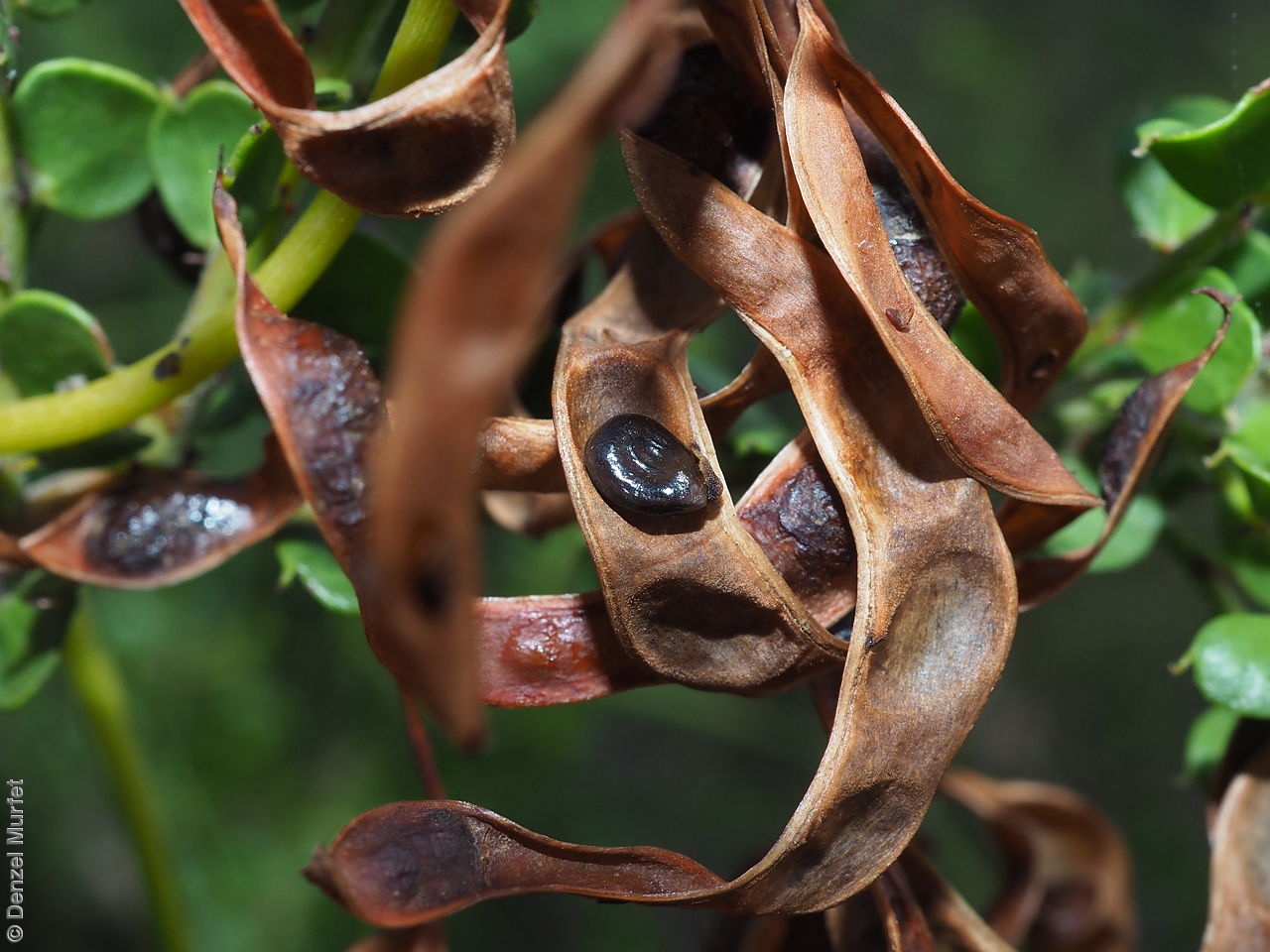
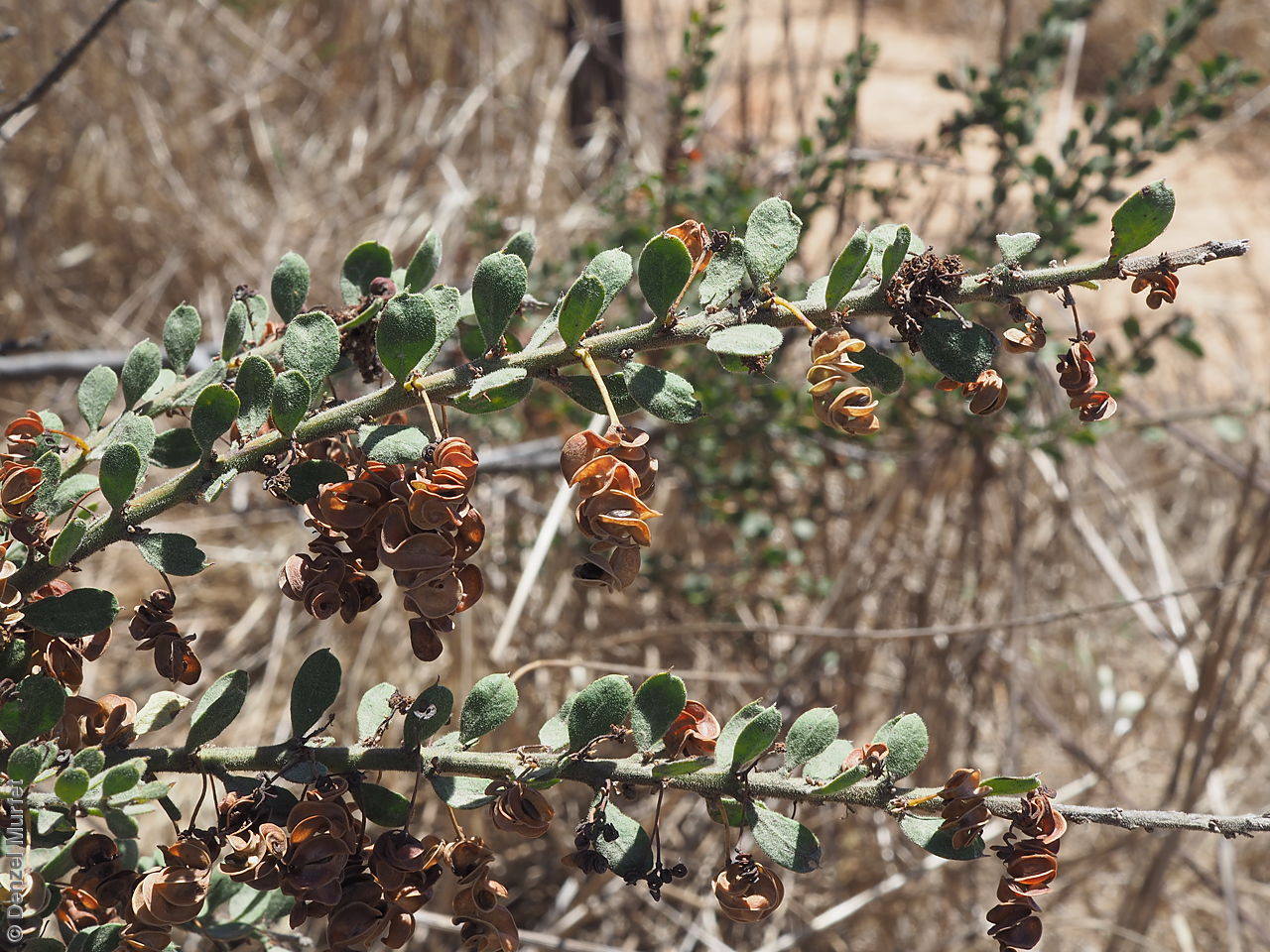
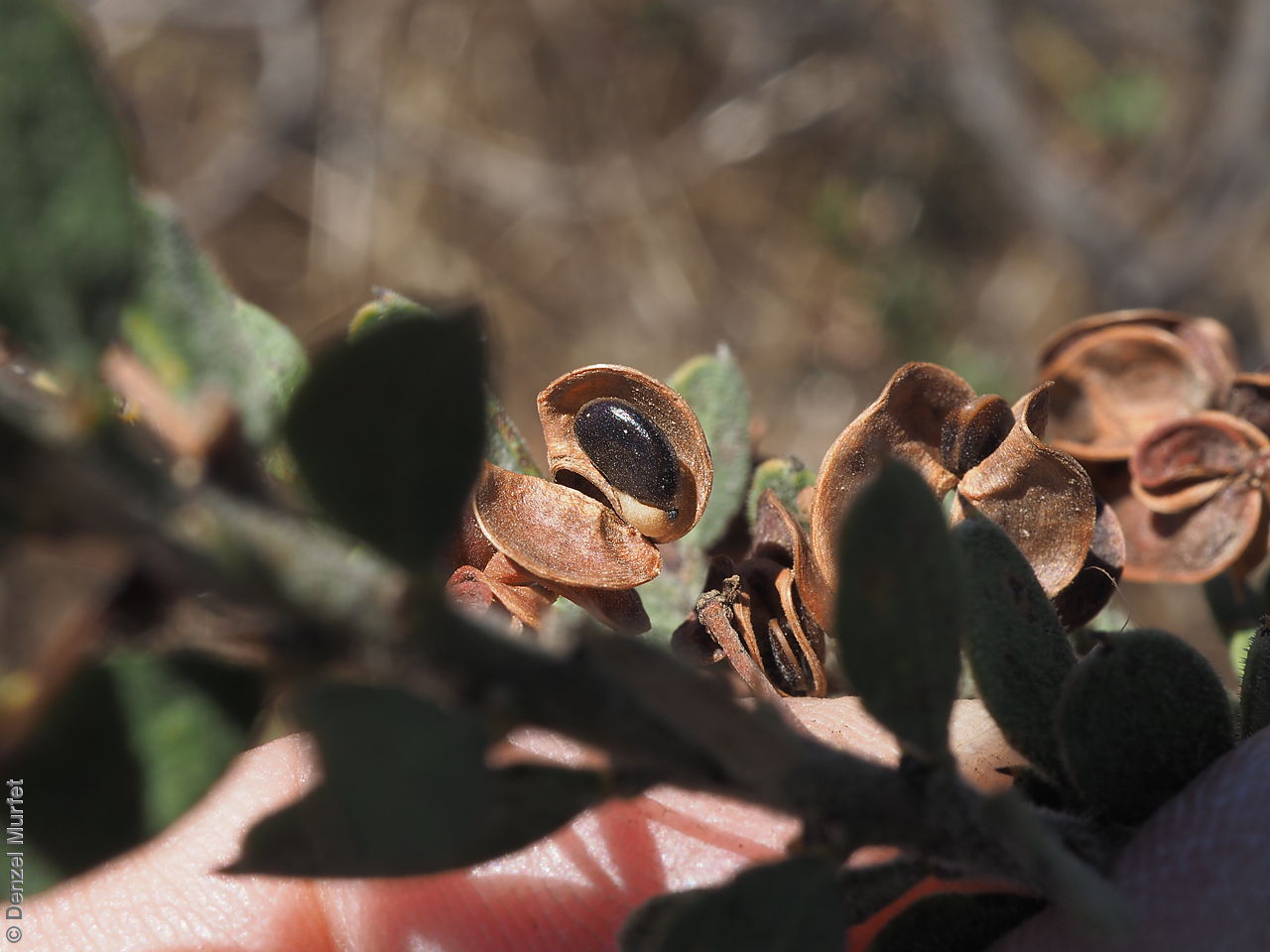
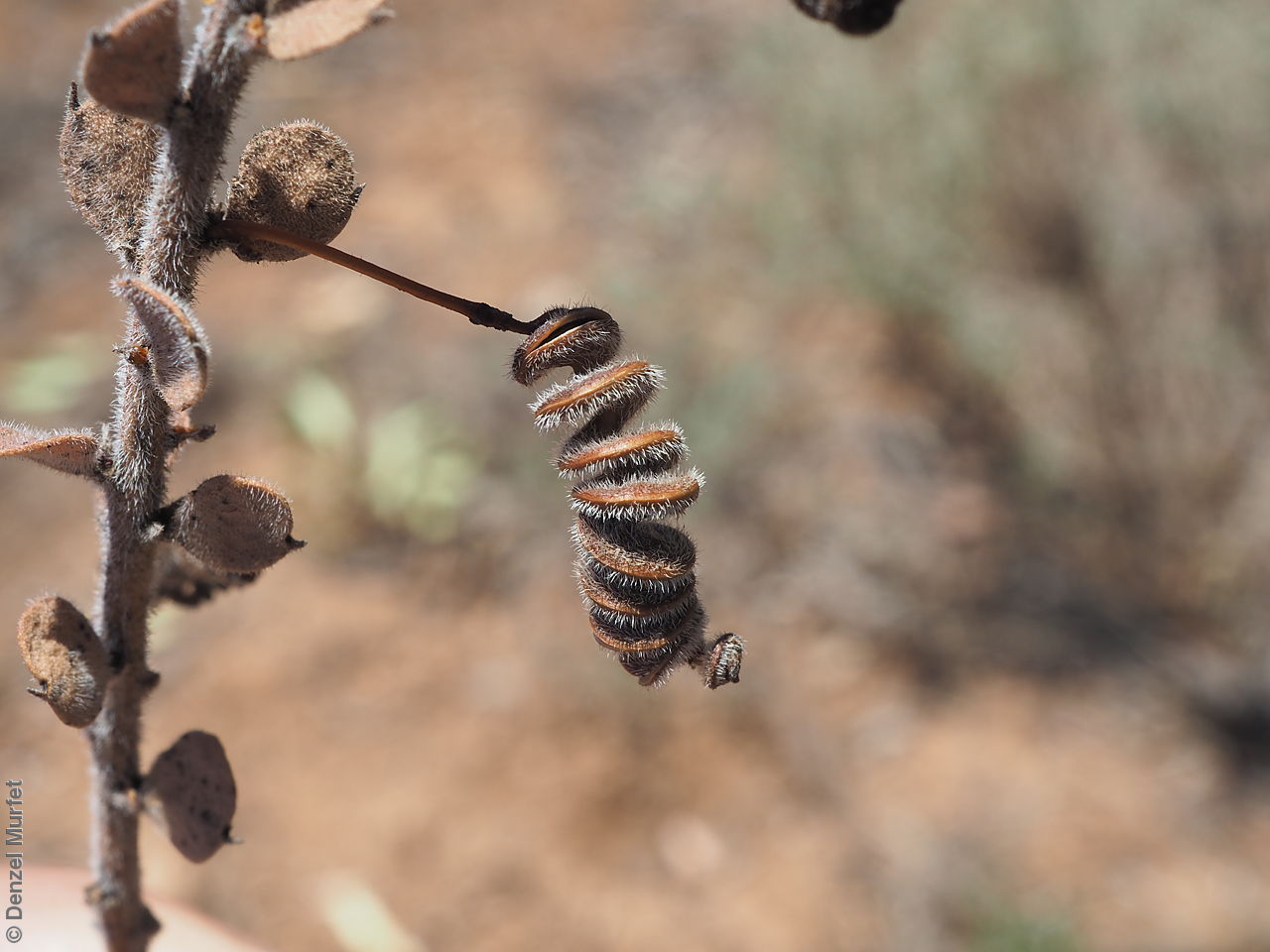
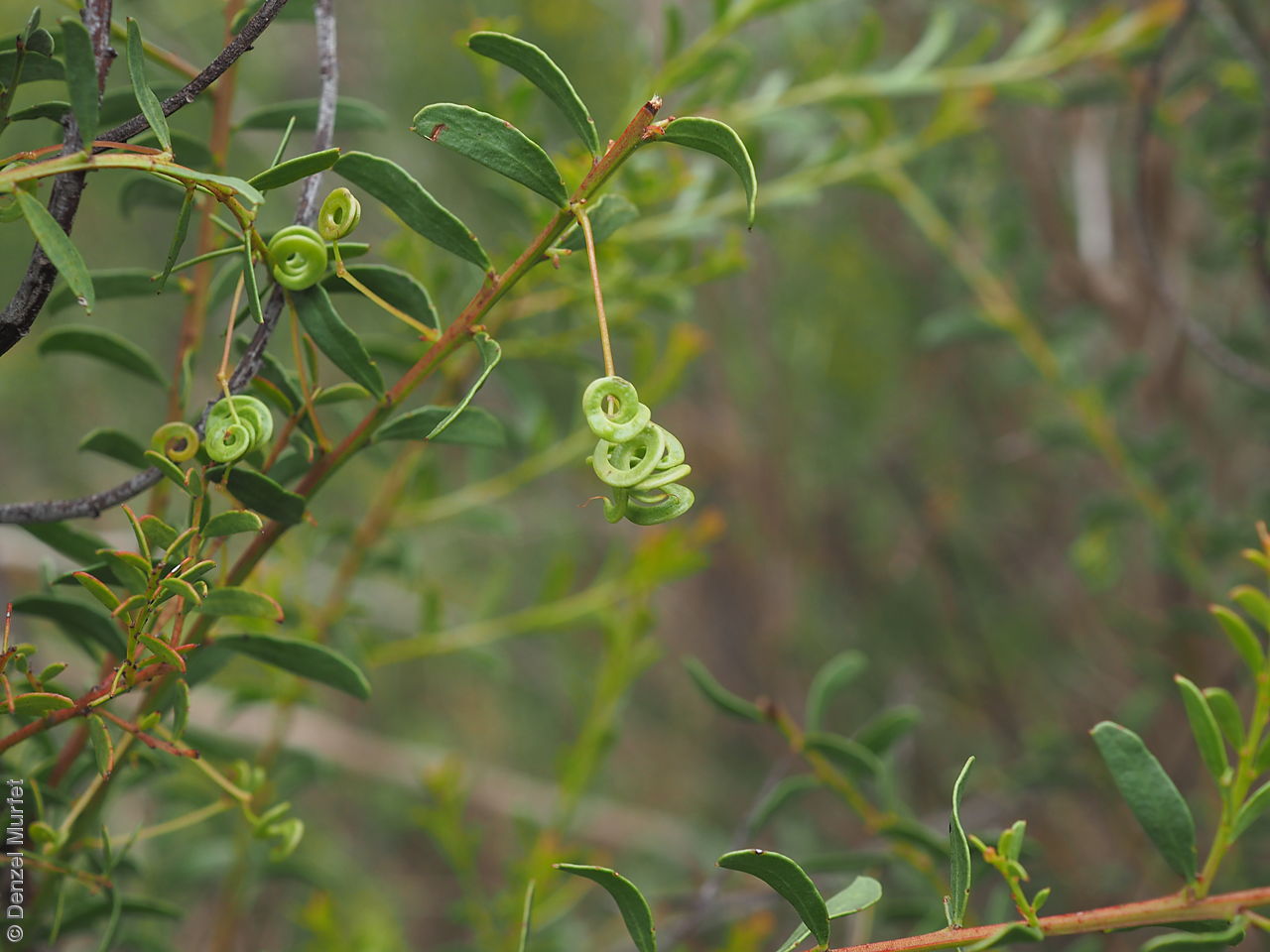
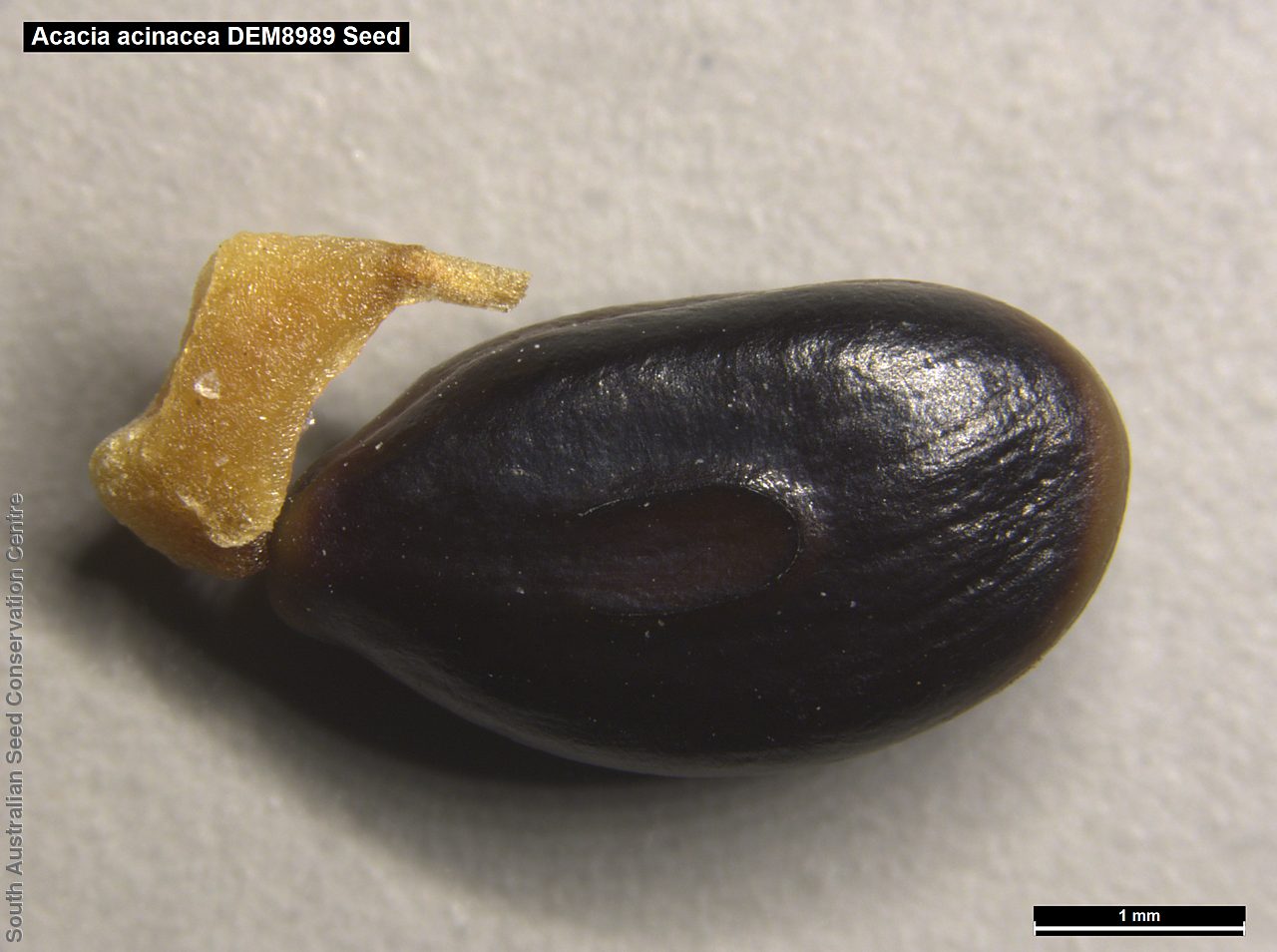
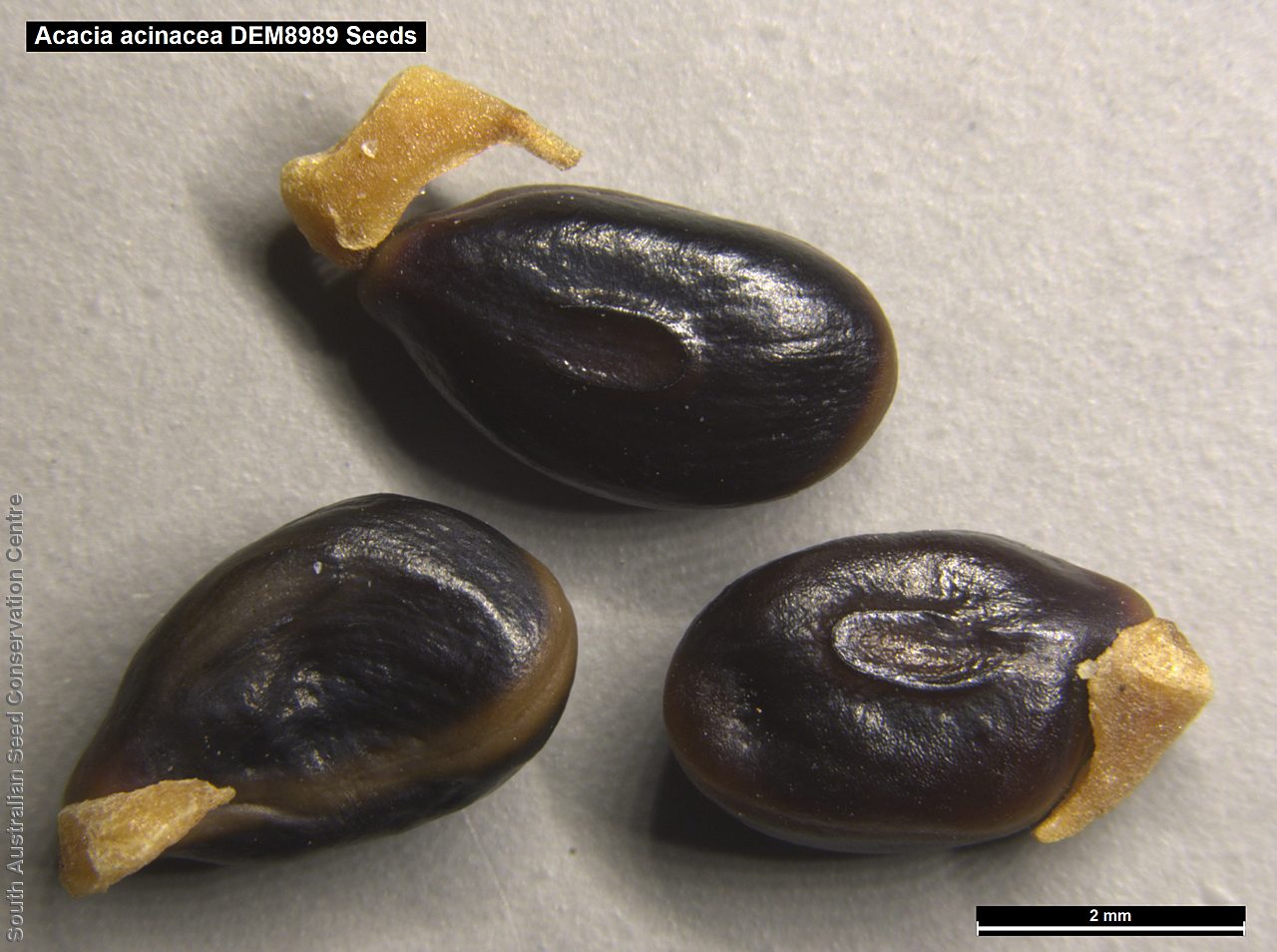
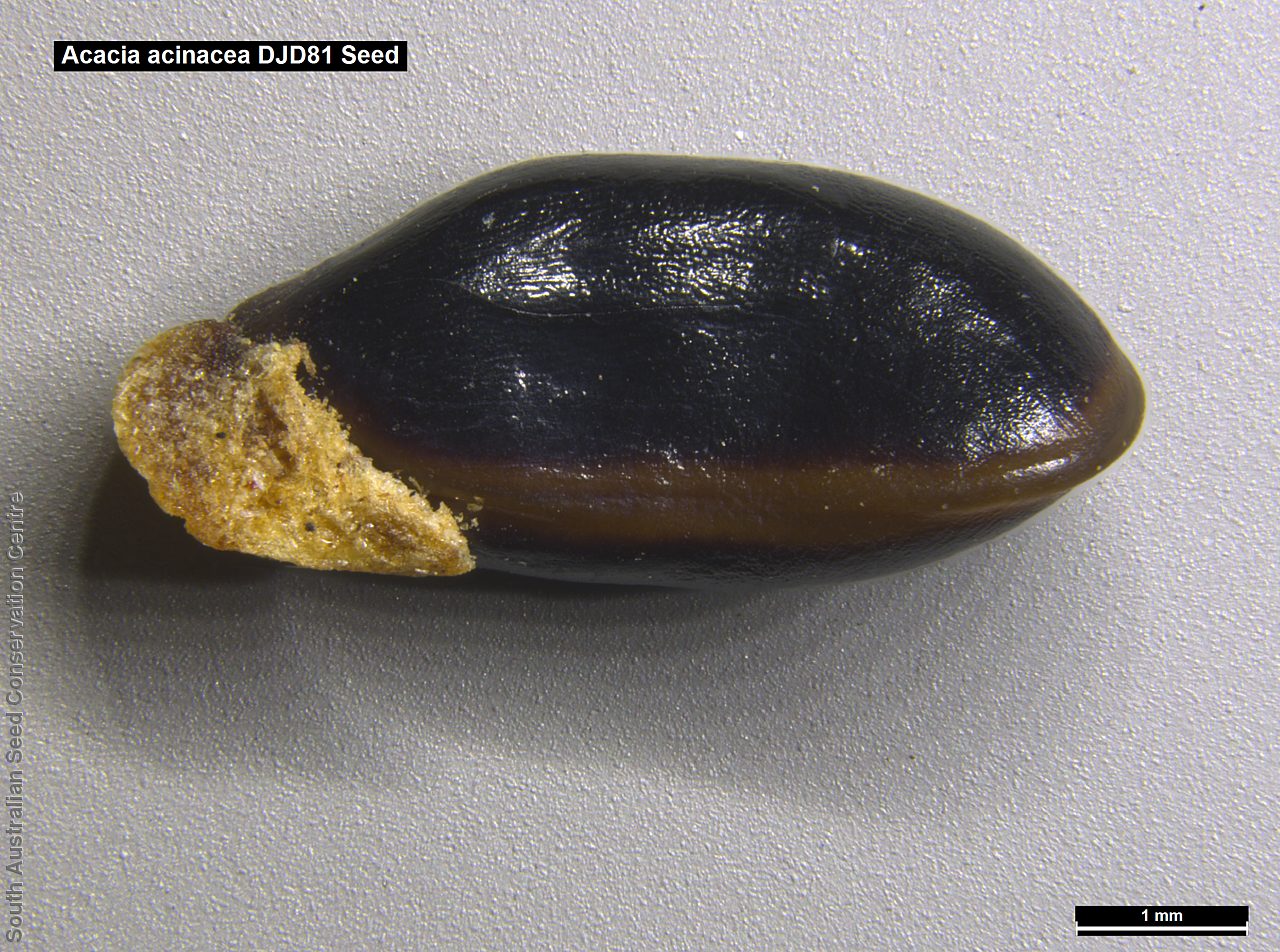
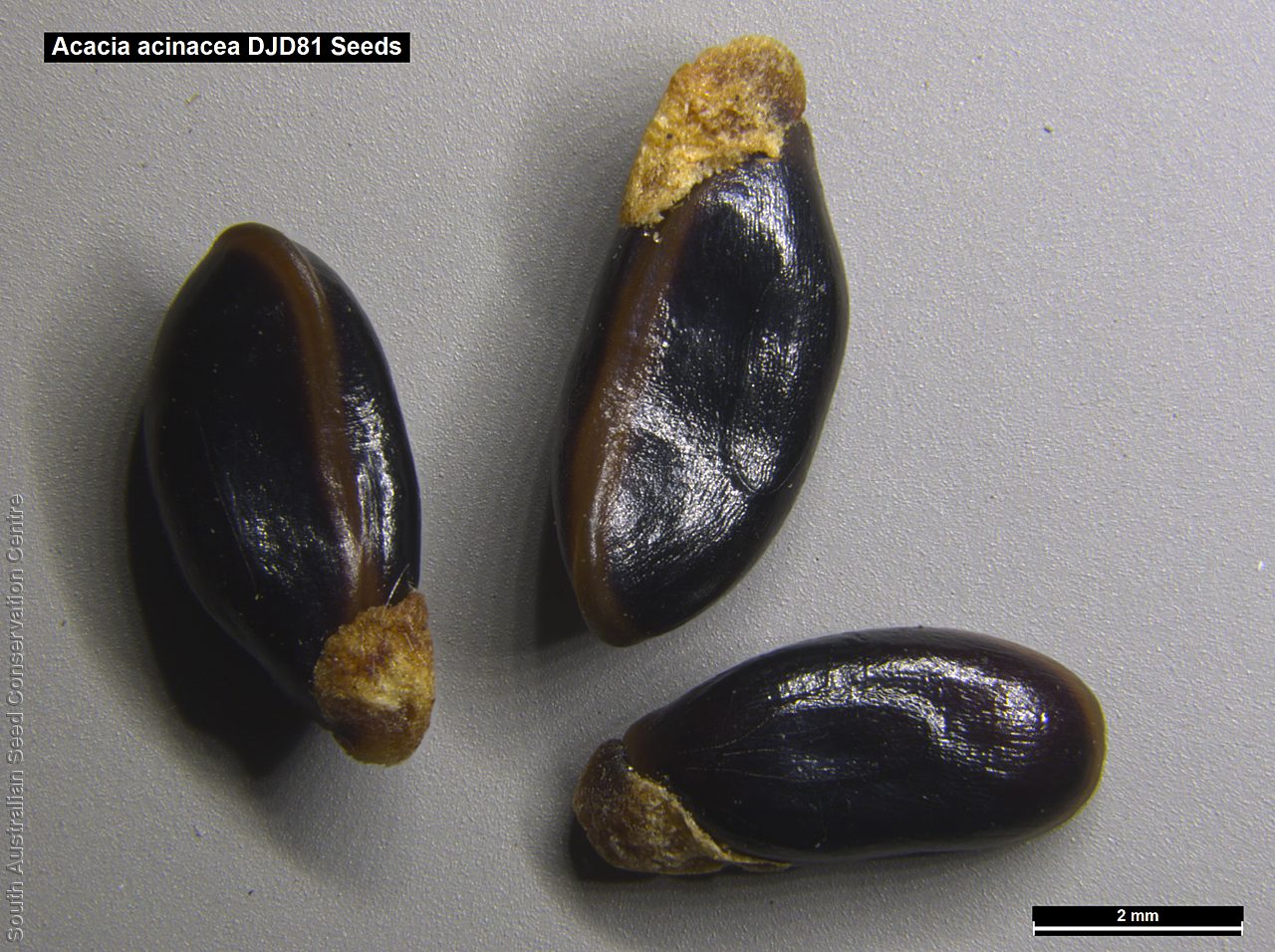
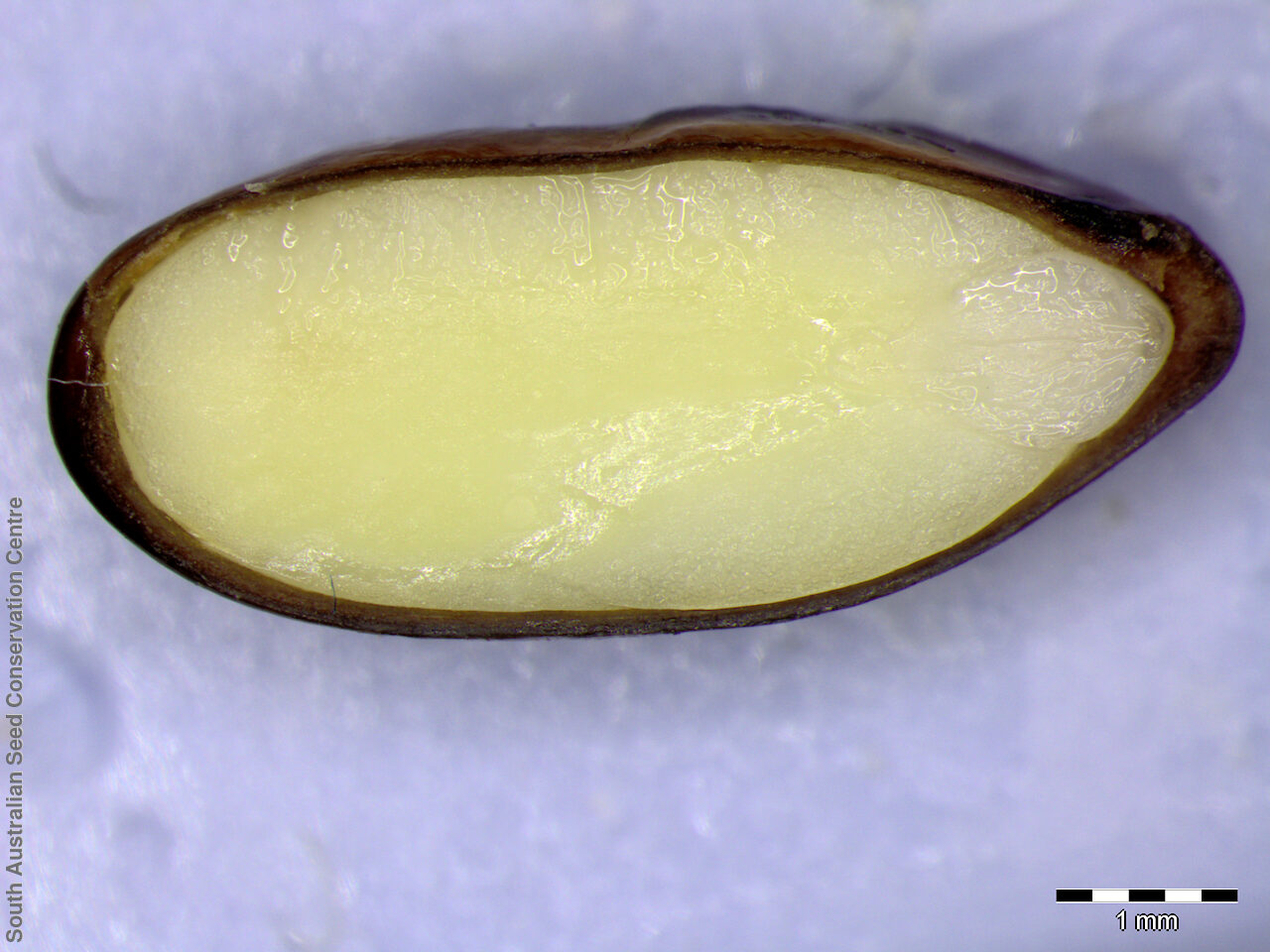
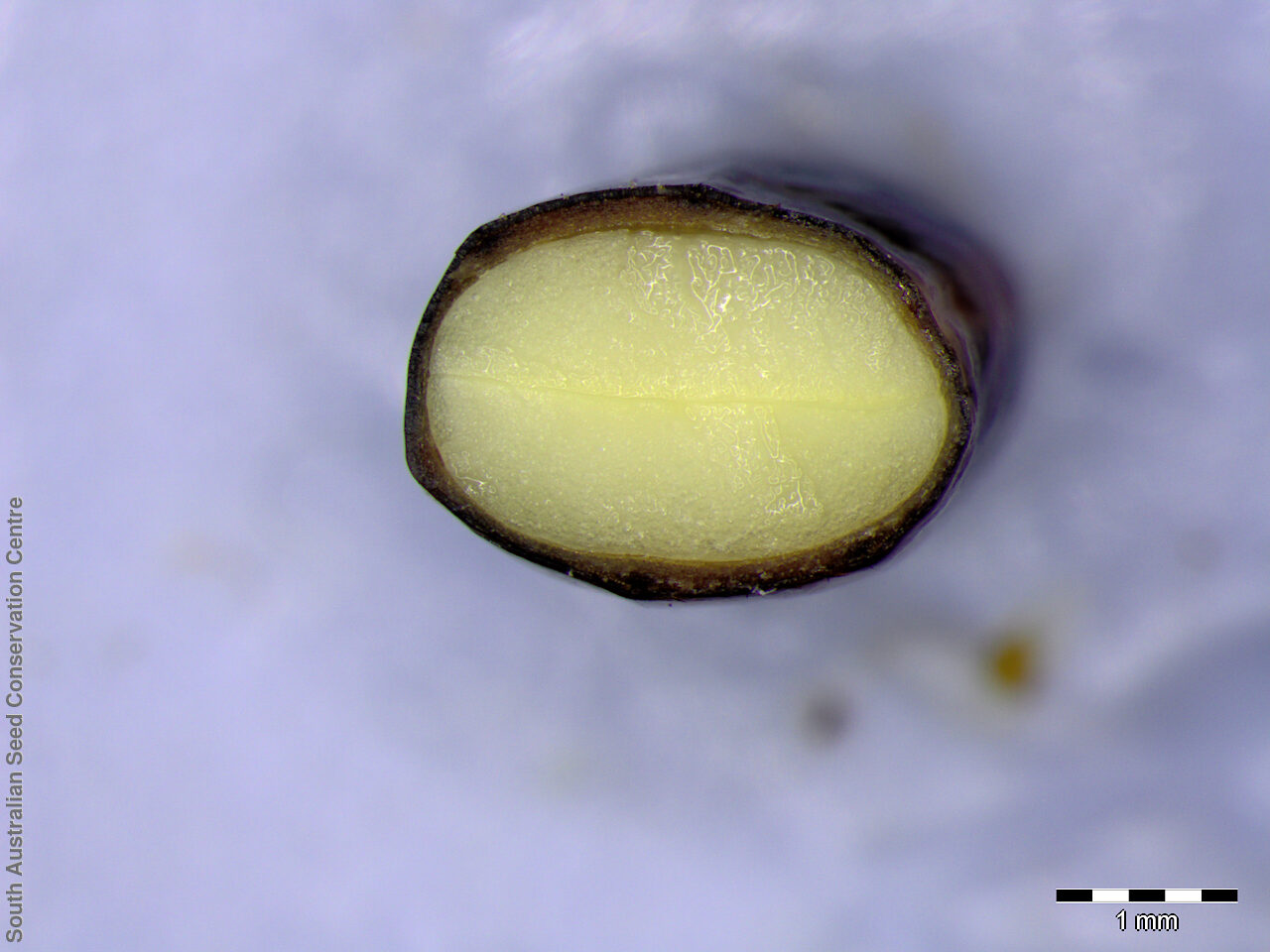

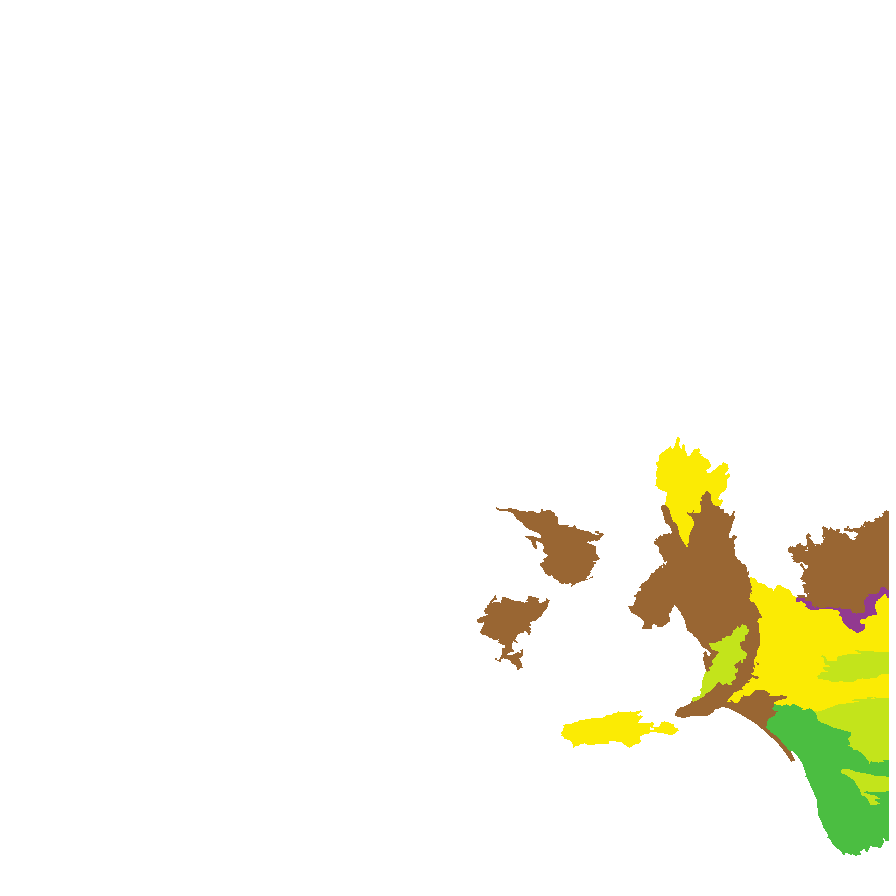
Botanical art
Prior names
Acacia latrobei
Acacia rotundifolia
Acacia obliqua
Acacia cyclophylla
Common names
Round-leaf Wattle
Wreath Wattle
Etymology
Acacia from the Greek 'akakia' and derived from 'ake' or 'akis' meaning a sharp point or thorn and 'akazo' meaning to sharpen. Dioscorides, the Greek physician and botanist used the word in the 1st century AD for the Egyptian thorn tree, Acacia arabica. Acinacea from the Latin 'acinaces' a short persian sword, referring to the shape of the phyllodes.
Distribution and status
Found in the Mount Lofty Ranges, Kangaroo Island, Flinders Ranges (southern part) and Murray regions. Grows in woodland and open forest on sandy, clay and loam soils. Also found in New South Wales and Victoria. Native. Common in South Australia. Common in the other States.
Herbarium regions: Flinders Ranges, Northern Lofty, Murray, Southern Lofty, Kangaroo Island, South Eastern, Green Adelaide
NRM regions: Adelaide and Mount Lofty Ranges, Kangaroo Island, Northern and Yorke, South Australian Murray-Darling Basin, South East
AVH map: SA distribution map (external link)
Plant description
Small, straggly, often spindly and rather loosely-branched shrubs to 1.5 m high with short thin stems that divide into rather long slender arching branches. Phyllodes obliquely obovate or orbicular to 14 mm long, flat, more or less pubescent. Inflorescences simple and axillary, solitary or twin with globular, bright yellow flower-heads. Flowering between May and September. Fruits are dark brown, linear, spirally coiled pod to 7 cm long and 4 mm wide, glabrous or sometimes sparsely hairy with yellowish, vein-like margins. Seeds are hard, dark brown to black, ovoid to 5 mm long and 3 mm wide. Seed embryo type is investing.
Seed collection and propagation
Collect seeds between September and November. Collect mature pods that are turning brown with hard, dark seeds inside. Place the pods in a tray and leave to dry for 1-2 weeks or until the pods begin to split. Then rub the dried pods to dislodge the seeds. Use a sieve to separate any unwanted material. Store the seeds with a desiccant such as dried silica beads or dry rice, in an air tight container in a cool and dry place. Seed viability is usually high. This species has physical dormancy that needs to be overcome for the seed to germinate (e.g. nicking or softening the seed coat).
| Location | No. of seeds (weight grams) | Number of plants | Date collected | Collection number Collection location | Date stored | % Viability | Storage temperature |
|---|---|---|---|---|---|---|---|
| BGA MSB | 1,900 (19.5 g) 1,950 (19.5 g) | 30 | 13-Dec-2004 | DJD81 Southern Lofty | 31-Mar-2006 | -18°C | |
| BGA | 1,800 (21.5 g) | 30+ | 22-Dec-2010 | DJD1795 South Eastern | 1-Jan-2012 | 90% | -18°C |
Number of plants: This is the number of plants from which the seeds were collected.
Collection location: The Herbarium of South Australia's region name.
% Viability: Percentage of filled healthy seeds determined by a cut test or x-ray.